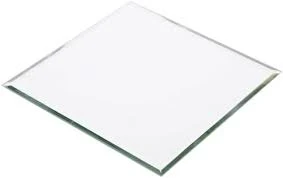In the realm of cutting-edge construction and sustainable architecture, infrared reflecting laminated glass has emerged as a beacon of innovation, merging both aesthetic allure and exceptional functionality. As the demand for energy-efficient building materials intensifies, this advanced glass technology offers a remarkable solution for enhancing the environmental performance of both residential and commercial structures.

When exploring the benefits of infrared reflecting laminated glass, it is essential to recognize its unparalleled capacity for heat management. Traditional glass facilities are often prone to significant heat transmission, leading to increased energy consumption within buildings. In contrast, this specialized glass incorporates a unique coating that reflects infrared radiation while allowing visible light to pass through. This miraculous feat of engineering means that interiors remain cool during sweltering summers and cozy during frigid winters, substantially reducing the need for air conditioning and heating. These energy savings not only aid in reducing operational costs but also contribute to a decrease in greenhouse gas emissions, supporting global sustainability goals.
Expert opinions from leading architects and engineers consistently highlight the superiority of infrared reflecting laminated glass in its durability and safety features. Unlike standard glass panes, which can shatter into hazardous shards upon impact, laminated glass consists of multiple layers bonded together with a tough polyvinyl butyral (PVB) interlayer. This configuration not only augments the structural integrity of the glass but also ensures that it remains intact, even when damaged. In regions prone to extreme weather conditions, such as hurricanes or typhoons, this safety attribute of laminated glass can be a lifesaving feature, providing occupants with an extra layer of protection against flying debris.

An often-overlooked advantage of this sophisticated glass technology is its contribution to acoustic insulation. The multiple layers that provide physical security also serve as formidable barriers to noise transmission. This capability is particularly advantageous in urban environments, where traffic and industrial noise can significantly affect the quality of life. Buildings with infrared reflecting laminated glass can maintain a tranquil indoor atmosphere, making them ideal spaces for work, leisure, and rest.
infrared reflecting laminated glass
Unwavering adherence to quality and excellence is non-negotiable in the production of infrared reflecting laminated glass. Manufacturers must align with stringent industry standards and rigorous testing protocols to ensure the glass meets the desired specifications for safety, performance, and clarity. The layering of the glass, along with the precise application of the infrared reflecting coating, demands meticulous attention to detail and state-of-the-art production methods. These high standards do not merely reflect the commitment of manufacturers towards safety and precision, but also guarantee that consumers are receiving a product that exemplifies trustworthiness.
Beyond its technical prowess, the aesthetic versatility of infrared reflecting laminated glass should not be underestimated. With the rise of modern architectural designs that emphasize open, light-filled spaces, this type of glass offers endless possibilities.
It can be tailored to meet specific aesthetic preferences without compromising on performance. From sleek corporate offices exhibiting futuristic façades to luxurious residences enveloped in panoramic views, infrared reflecting laminated glass harmonizes effortlessly with the vision of designers and architects alike.
In conclusion, the application of infrared reflecting laminated glass is not simply a trend but a strategic choice for those seeking sustainable, secure, and stylish building solutions. As the world continues to grapple with environmental challenges, the integration of such advanced materials becomes critical in driving change towards more efficient and responsible construction practices. Investors, builders, and homeowners are encouraged to consider this innovative glass technology, not only as a present asset but as a future-forward investment in the planet's health and well-being.



